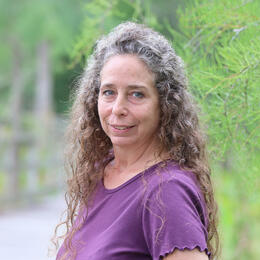Because many environmental changes happen at a snail’s pace, long-term datasets are critically important for identifying and understanding trends. Research staff at the Sanctuary have been monitoring the shortened hydroperiod or the number of days each year that water is above ground in a wetland, as part of their effort to understand local Wood Stork nesting efforts.
Until now, the water-level dataset consisted of readings collected manually volunteers and staff, but these readings only tell part of the water story at the Sanctuary. These methods also rely on daily observation (for staff gauges) or monthly visits to download data (for wells); however, recent circumstances have highlighted problems with relying on these methods.
Thanks to funding support from Knopf Family Foundation and others, Sanctuary staff have some new tools in their toolbox, including two solar-powered, satellite-telemetered, water-level recorders recently installed for the purpose of long-term hydrologic monitoring.
What, exactly, is a satellite-telemetered, water-level recorder?
The water-level recorder is a device connected to a wellhead that accurately measures the water levels at pre-determined intervals and records the data. These data are immediately transmitted by satellite and available online to our research team in real-time. Two new wells were installed in locations that are deep in the heart of the Sanctuary and not easily accessible by staff. Having data available in this way allows our research and land management staff to have current data at their fingertips, and alerts them immediately to any inevitable technical issues so they can be addressed and corrected to prevent data loss.
The data that can now be collected are critical to enhancing our understanding of inter- and intra-annual dynamics of surface and groundwater in the old-growth bald cypress stand central to the Corkscrew Wood Stork colony. These two telemetered stations will augment the existing gauges and data recorders maintained by Corkscrew Swamp Sanctuary staff to provide a much more comprehensive look at the Sanctuary’s hydroperiod and provide more insight into the issues surrounding Wood Stork nesting efforts and the hydrology that drives all of our swamp’s ecological processes.






